I introduce myself with the biggest smile I can muster and enthusiastically chat about topics I hope a teenager would enjoy. She seems fascinated but her fascination has less to do with me and more to do with her chirpy personality. I ask her about her siblings, which excites her and she eagerly asks if I will come again tomorrow as they would be visiting. I nod yes, shut off my brain and pretend I have my favourite friend’s daughter sitting across from me. She might as well be given the wide perpetual smile she offers me. We talk about favourite foods, colours, hobbies and subjects in school. Very quickly I realised that Amna is a typical teenager but with impeccable manners. She tells me that the book in her hand is boring so I get her one titled Ali Baba Aur Chalis Chor (Ali Baba and the Forty Thieves). I have not read to a child in a long time. I am nervous, but not because my Urdu skills have deteriorated but because Amna is sick.
Amna has cancer and is being treated, on an in-patient basis, at Shaukat Khanum Memorial Cancer Hospital and Research Centre. She has been diagnosed recently and has not attended her Bahawalnagar school in a month. I open Ali Baba and the Forty Thieves and start reading. I struggle with some words and we giggle. We chant together,
“Khul ja Simsim, bandh ho ja Simsim”
(Open Simsim, shut Simsim)
I try to dramatise every word just to see her precious smile. As we are reading, Amna pulls at her intravenous tube which is switched between providing chemotherapy and hydration. We read for an hour. I enjoy her laughter as much as she enjoys my story telling. She then pulls out another book titled Soneray Baalon Wali Shehzadi (The princess with golden hair), known to many as Rapunzel. Amna excitedly tells me that this is her favourite book,
“I love the princess’ long hair.”
Suddenly, her smile fades. I can read her thoughts. Her mother chimes in,
“Amna started to cry when the doctors told her she will lose her hair.”
My heart breaks but I smile. This teenager is going to go through hell. I just smile, because the only thing I can do is smile and make her smile. I smile to take one moment of my pretty useless life and transform Amna’s very difficult moment into a bearable one. We talk some more and smile some more. I leave but only after promising to see her again. I leave her room with a heavy heart.
Research has firmly established a positive relationship between happiness and volunteerism. In Pakistan less than 2% of the Gross National Product (GNP) is invested in health services. The infant mortality rate is 8.6%, one of the highest in the world. The ministry of health changes with changing governments, as each prime minister appoints their own staff, resulting in abnormally frequent shifts of health policy. Lack of governmental investment, along with corruption and illiteracy are factors hindering the development of health services in urban and non-urban areas. Fortunately, there is immense private philanthropic support in the health services sector where entire hospitals, clinics and medical dispensaries are operated on private monies and charity.
Despite the tremendous philanthropic financial support, there is not ample volunteerism in terms of dedicating our time to the causes we support.
Can you help?
Meet Meena, a very delicate four-year-old from Swat.
I walk in to her hospital room and I am warmly greeted by her parents; her father speaks Urdu. Meena doesn’t look in my direction even when I say a few words in Pashto. The young patients are the most pensive and are very apprehensive of visitors as they are prodded and injected all day. Meena has been recently attached to a medical port in the chest and she has been crying heavily. I start by telling her how pretty she is. Her father translates but Meena doesn’t bat an eyelash. I carry this childish conversation for a good 10 minutes. There are tiny teddy bears on her patient suit. I ask her if she likes bears and she smiles.
Apparently she loves animals, especially cats.
I found my icebreaker.
I meow and Meena laughs while stealing looks at me. Later, we watch an animal show on the Discovery Channel. Meena happily grabs the butterfly toy I bring from the playroom and we make a connection. Maybe I distracted this little angel for a few hours.
Making a sick child smile is like meditation, it is immensely peaceful.
I almost fall in love with Meena, but falling in love with sick children is a scary business.
There are 300 volunteers who spend time with children, and do much more, at the hospital. The therapists and physiologists at the hospital document volunteer visitors in order to have a positive impact on the happiness of young patients. Celebrating birthdays or reading and playing board games makes a big difference to the patient children who are far from home, sometimes unaccompanied by immediate family, and most don’t understand a word of Urdu.
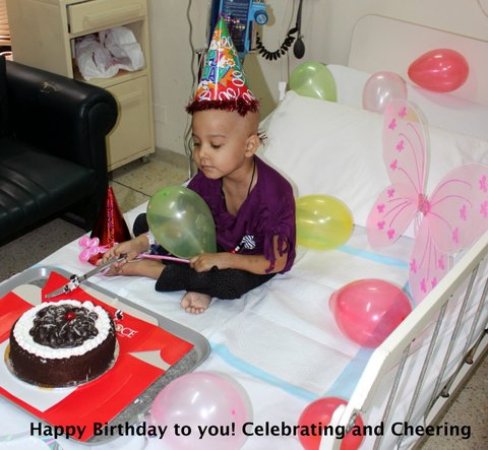 Photo: Faryal Malik
Photo: Faryal Malik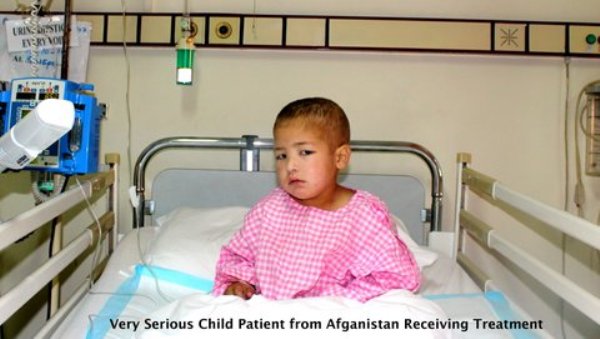 Photo: Faryal Malik
Photo: Faryal Malik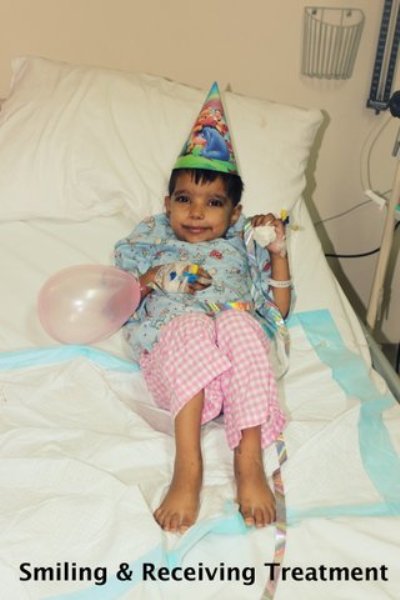 Photo: Faryal Malik
Photo: Faryal Malik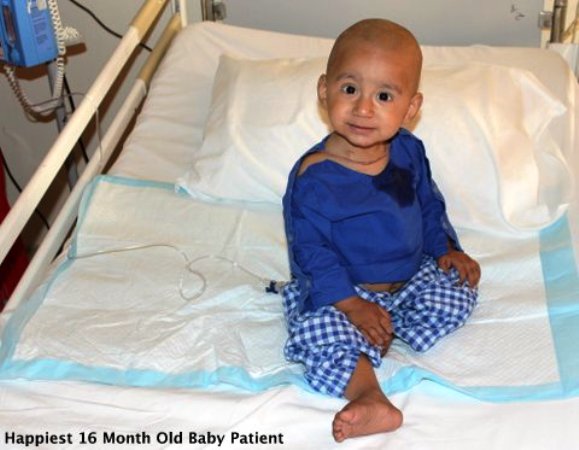 Photo: Faryal Malik
Photo: Faryal MalikMany young adults like Aneeqa Ali, who recently bicycled from Lahore to Multan to raise funds for Pedal for Peace, are volunteering time to benefit others. When asked why volunteering is so important, Aneeqa responded,
“Volunteering is the easiest way to play your small part for the development of the society/community you live in. In a nutshell, my inspiration for volunteering is ‘be the change you want to see in the world’. Volunteering helps you do that according to your capacity, while being a part of the system, rather than declaring open rebellion. Volunteering time is also a great way to connect with like-minded people, who collectively can do more good, than they are capable of individually.”
Now are you ready to meet Ali?
I know I was not.
Imagine a hospital bed for an adult.
Now imagine an eight-month-old boy taking up a fraction of it.
My heart shattered when I saw him.
Ali was sleeping in his navy blue pant suit. Ali’s mother lying haplessly on the sofa brightens up instantly and invites me to ‘keena’ (meaning sit). She speaks in Pashto only. We exchange a few sentences, exhausting my Pashto vocabulary very quickly. We then resort to sign language.
Somehow, she tells me about her three sons out of whom Ali is the youngest. Ali wakes up and wails. Her mother points to the intravenous tube on his hand and keeps saying ‘jaara’ (cry). I gather he was agitated by his IV and cries a lot. An infant receiving cancer treatment really makes me question everything about life. Ali looks directly at me for less than a minute. He really is the cutest little guy. I ‘goo goo gaa gaa’ but Ali is not interested.
My time there is more for the mother. She points at her clothes and tells me she doesn’t have a change of clothes because they were not expecting Ali to be so sick as to require hospital admission. After what seems like an emotional eternity, I stand to leave but she says ‘keena’. This happens six times. She is sad and maybe just my mere presence is a bit soothing? I smile nonstop just to make her feel better as I have nothing else to give. The patient’s lunch arrives and even in her distress, the mother is hospitable, offering her food to me. I decline, and this time I leave.
If handling children and being around the sick is not your strongest suit, then consider offering your area of expertise to a cause. Some volunteers are able to provide continuing medical sessions, speak at conferences on their areas of expertise, or advocate awareness campaigns. For example, numerous volunteering opportunities exist at SOS Children’s Village, where either complete orphans or ‘social’ orphans are “placed in an environment which is as close as possible to a natural home”.
Rising Sun Education and Welfare Society is an organisation where the mission is to,
“Provide special children with education and training facilities to enhance their capabilities and rehabilitate them in the society.”
Some research shows that disability in the city of Lahore is at an alarming 30% for children ranging between 4-15 years.
If organised volunteering seems too much of an effort, consider visiting a neighbourhood madrassa.
This may sound ludicrous but stay with me for a second.
There are approximately 18,000 - 24,000 registered madrassas in Pakistan, but unofficially, there are at least double those amounts, if not more. These madrassas house very poor children, aged between four to 16, some orphans from surrounding smaller cities and villages. There is no official curriculum being followed by these unregulated schools and there is no governmental intervention or support for many of them. Because of the philanthropic spirit in Pakistan, there is always free basic food at these institutions but nothing more.
 Photo: Faryal Malik
Photo: Faryal MalikThese little children are no different than our own and are living away from home with little facilities. Bringing them snacks different from the charity meat, rice and flour is a real treat for them. On a few occasions, and under supervision, we planned an excursion with these students to go to McDonalds or visit the Lahore Zoo or go for burger and ice cream lunches. Spending time and playing with these students is imperative because these children are ignored by the state, some by their own parents, and there is no real care provided by madrassa teachers.
Given the lack of governmental investment in health services, private financial contributions are crucial but volunteering time to a cause is irreplaceable. Giving time to children can be a special kind of charity; a charity for children that is given to the volunteers through their tender, heart melting and healing smiles. By dedicating a few hours, volunteers may receive fulfilment, love, appreciation and above all, priceless perspective. If you too want to volunteer and extend Eid’s spirit of sacrifice, there is a tragedy waiting to receive your time and help at every corner. All the time.
Finally, please meet Sara.
I had to wait to meet her as she was in the restroom while her brother was patiently standing outside. I mask the overwhelming emotions at seeing the 15-year- old. I was immensely discombobulated. Chemotherapy had transformed Sara’s appearance and one of her legs had been amputated well above the knee. Yet, she gives me the loveliest smile I have ever received. She hops onto the bed using her crutch. We exchange formalities. Sara is sporting a colourful dupatta (scarf) over her head. Her cancer treatment has taken a physical toll on her but I am truly amazed at her resilience and constant smile. She refuses to lie down and is beaming with positivity. Internally, I am deflated and immensely emotional as I fail to grasp reality,
“She is a 15-year-old teenager for goodness sake, this should not be happening.”
But she keeps smiling a very hopeful smile and we keep talking about inconsequential happenings. Sara has inspired me beyond words and I carry her smile everywhere within me. Every time I feel sad about something, I close my eyes and see a smiling Sara. If she is able to find a reason to smile, why can’t I?!
Disclaimer: All names have been changed to protect the identity and medical conditions of the children. The patient children captured in the pictures are not in the ones described in the content of this article.

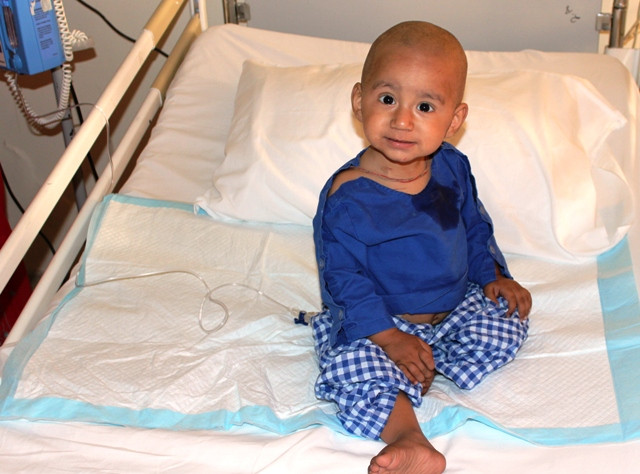

COMMENTS
Comments are moderated and generally will be posted if they are on-topic and not abusive.
For more information, please see our Comments FAQ